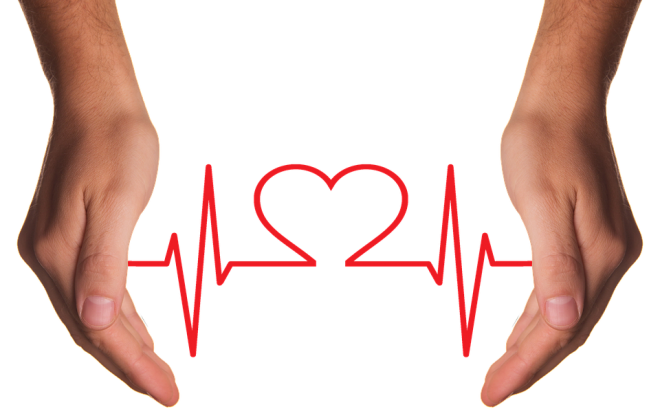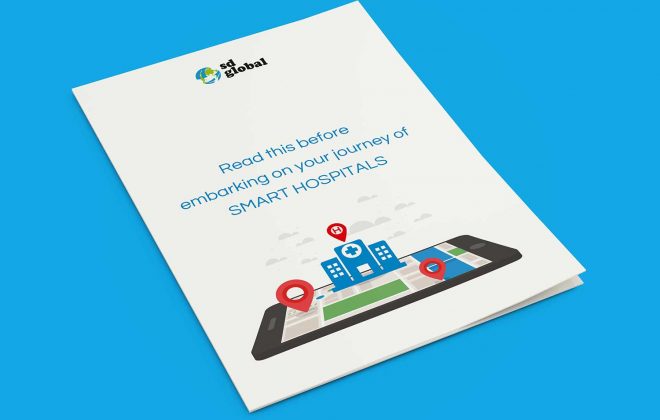5 Technology Trends that will Transform Healthcare in 2019
With the year coming to a close, it’s time to gear up for healthcare technology trends to watch out for in 2019. From the changing realm of telemedicine to the outstanding possibilities of Artificial Intelligence (AI), IoT, blockchain and mixed realities – these technologies are going to impact healthcare organizations in a big way. And although healthcare has historically been slow to adopt technology, the industry is about to undergo a significant transformation in the next couple of years. According to Statista, the digital health market is expected to reach $206 billion by 2020. Forward-thinking companies are already redefining themselves with digital transformation, by laying modern technology as the foundation of customer-centric care. Let’s look at technology trends that will transform healthcare in 2019:
Technology Trend 1: AI
Since the past few years, AI has been causing quite a furor in several industries, most notably manufacturing. However, the potential for AI to drive digital transformation in healthcare is immense. 2019 will see the healthcare industry adopting AI in a big way – to automate tasks, process information and achieve critical decision-making data in a matter of seconds. In 2019, AI applications will improve the speed and accuracy of diagnosis, allowing practitioners to identify concerning developments and look at possible approaches for early treatment. AI-based diagnostic devices will examine human anatomy in detail, and provide doctors with high-quality images that can then be analyzed for improved healthcare outcomes. These devices can be used, for example, to produce cancer diagnoses and determine which drug combinations might be most suited to individual patients. When combined with machine learning algorithms, 2019 will also AI being utilized to explore chemical and biological interactions in the drug discovery process, substantially improving the time-to-market of new drugs.
Technology Trend 2: Analytics
All through 2019, analytics will continue to be an integral part of healthcare operations. Although dealing with a patient who has a chronic disease can generate a great deal of information, analyzing all the available data into something actionable can be a challenge. Improvements in data science and predictive analytics, however, will make it possible for practitioners to look for deeper insights. Doctors will be able to feed in information about family history into analytics engines and come up with statistical hypotheses that can help in diagnosing problems faster. Such data can allow doctors to identify and address patterns that are prevalent in certain regions, families, trades and population clusters. 2019 will also see analytics being used to improve efficiency within healthcare organizations. Patients who are at a higher risk of re-admission, for example, can be paid more attention during their initial admissions in order to improve long-term care and minimize the chances of re-admission.
Technology Trend 3: Blockchain
With the mounting occurrence of data breaches, blockchain technology with its distributed ledger of robust, incorruptible list of cryptographically signed transactional records is touted to make big waves in the healthcare industry in 2019. As enhancing availability, integrity and confidentiality of patient data become critical; blockchain will enable distribution of transaction records through a peer-to-peer system with a shared digital ledger. Although blockchain is expected to create $3.1 trillionin business value by 2030, in 2019, blockchain will allow large numbers of healthcare users to securely have access to a common ledger, without requiring a basis for trust between parties. As digital transformation in healthcare moves forward, fostering this blend of security, portability and easy accessibility will drive higher efficiency of healthcare outcomes and also reduce costs. For example, a specialist brought in for a critical case can be granted quick access to patient records that comply with HIPAA and GDPR standards to accelerate the diagnosis and treatment schedule for better quality outcomes.
Technology Trend 4: Immersive Technologies
According to Gartner, through 2028, conversational platforms, which change how users interact with the world, and technologies such as augmented reality (AR), mixed reality (MR) and virtual reality (VR), which change how users perceive the world, will lead to a new immersive experience. In 2019, these immersive technologies will pave the way for increased productivity, with the next generation of VR taking healthcare to an entirely different level. Immersive technologies will transform how doctors and patients view and interact with the world around: from educating new students to accurately planning treatment procedures, the field of AR and VR in healthcare offers substantial promise. The coming year will see doctors render 3D information on real-world scenarios, and carry out healthcare operations with more accuracy and precision. 2019 will see students using overlays to access information in an interface where they can quickly explore and compare data to what they’re seeing in the real world and understand the process of care with improved efficiency.
Technology Trend 5: IoMT
As the demand for affordable healthcare increases, and as an aging population continues to burden the healthcare system, health devices and mobile apps will play a critical role in tracking and preventing illnesses. IoT, when combined with telehealth technologies, has given rise to the Internet of Medical Things or IoMT that is touted to transform healthcare outcomes in 2019. With IoMT devices expected to grow to 20-30 billiondevices by 2020 and the market expected to reach $136.8 billionby 2021, IoMT is poised to play a big role in the enhanced monitoring of patient health, providing practitioners with real-time health data for earlier intervention. By integrating several distinct medical devices and applications and driving real-time machine-to-machine communication between them, the healthcare industry will see IoMT leading the way in 2019. In the coming year, healthcare organizations will use IoMT to collect and analyze data generated from myriad devices and improvedelivery, affordability, and reliability of care outcomes while simultaneously lowering mounting healthcare costs and stimulating new ways of engaging and empowering patients.
Get set go
With 2018 coming to a close, it’s time for healthcare organizations to gear up for tech trends that will make it big in 2019 and discover the numerous possibilities for transformative healthcare outcomes. With patient expectations at an all-time high, the only way to improve healthcare delivery is by staying abreast with the latest healthcare technology trends. As AI, analytics, blockchain, immersive technologies, and IoMT are underway, it’s time to adapt these trends to drive customer value and stay ahead of the curve. Are you ready to ring in 2019?





[…] 5 Technology Trends that will Transform Healthcare on 2019 […]